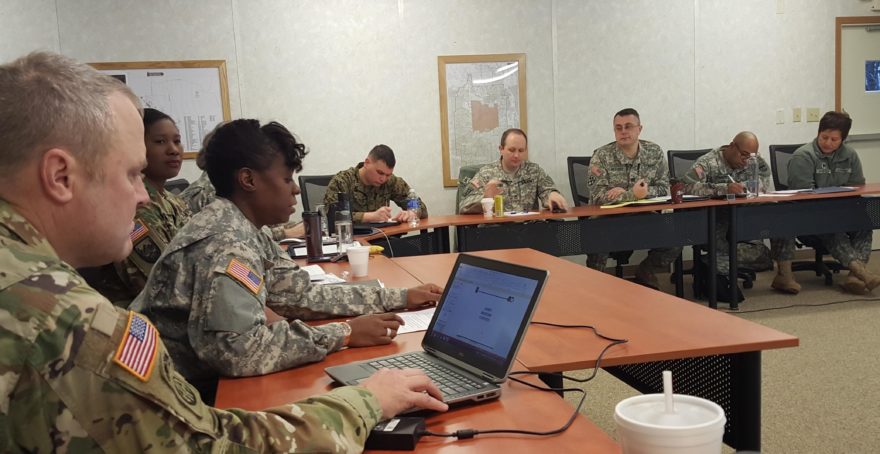Deployed Digital Training Campus (DDTC) is a worldwide distributed learning system that allows soldiers to complete professional training when it fits their professional needs and personal schedules. The Army has launched these units overseas in Iraq and Afghanistan to give Soldiers access to training that helps them earn promotions. DDTC classrooms come with laptops, internet access, and video teleconferencing. Deployed Digital Training Campus, or DDTC, is the Army’s solution for keeping soldiers’ educations up-to-date even overseas. The program provides brigade-sized units with portable schoolhouses with laptops, Internet access, video teleconferencing capabilities, and customized Army digital learning courses.
These systems can be set up at any deployed location worldwide. They can be shipped by ATIS and setup in two hours to meet the training needs of a brigade-sized unit during pre-deployment and deployment. In the past 10 years, DDTCs have provided training to over 23,000 Soldiers worldwide. Currently, 20 DDTCs are in operation around the world and ready to ship to wherever Soldiers need them. This is the premiere, one-stop solution for Soldiers’ training needs. PEO EIS’s Defense Integrated Business System operates the DDTC program for the United States Army. You can check our other army-related essential topics on our website, AKO Offline.

What does Deployed Digital Training Campus?
Deployed Digital Training Campus is a mini-schoolhouse developed by the Army’s Distributed Learning System that helps deployed Soldiers continue their professional military development while overseas. These portable electronic schoolhouses come equipped with laptops, Internet access, video teleconferencing, and satellite connectivity – all designed to help Soldiers stay connected to Army digital training courses during their long stints abroad.
This program, run by PEO EIS’s Defense Integrated Business Systems, deploys 20 of these electronic classrooms worldwide and has already helped Soldiers in six different countries meet their training goals. Those who use the DDTC have also reported that it’s an excellent way to keep soldiers up-to-date on their units’ latest training initiatives. The DDTCs are just one part of PEO EIS’s Army Training Information System, which is responsible for providing a one-stop training solution to the Army.

The purpose of Deployed Digital Training Campus
The Army’s Distributed Learning System has developed portable, electronic schoolhouses to allow soldiers in deployed units to stay up-to-date on their military education. These Deployed Digital Training Campuses (DDTCs) come with laptops, Internet access, and video teleconferencing capabilities. They also come with customized Army digital learning courses that Soldiers can access in the field.
The goal of the DDTC program is to help Soldiers complete professional development training while they’re deployed overseas, which can help them gain promotion points and earn better pay when they return home. Often, units with long deployments don’t have enough time to complete their training and might not have access to professional development equipment at home, said Glenn Maravillas, deputy project director for the DDTC program.
To fulfill this purpose, ATIS acquires, deploys, and manages 20 DDTC systems worldwide that can be used by Soldiers and their units when deployed or stationed at locations without telecommunication infrastructure. The DDTCs enable Soldiers to conduct structured self-development courses, advanced leader course phase one common core, correspondence courses, and any other Army digital learning programs.
The DTFM will oversee the operation and maintenance of DDTC systems at the assigned installation and collaborate with network DTFM’s across the ATIS enterprise. The DTFM will regularly interface with the Army’s Training Information System, the unit training group, the squad or platoon commander, and other relevant stakeholders.
